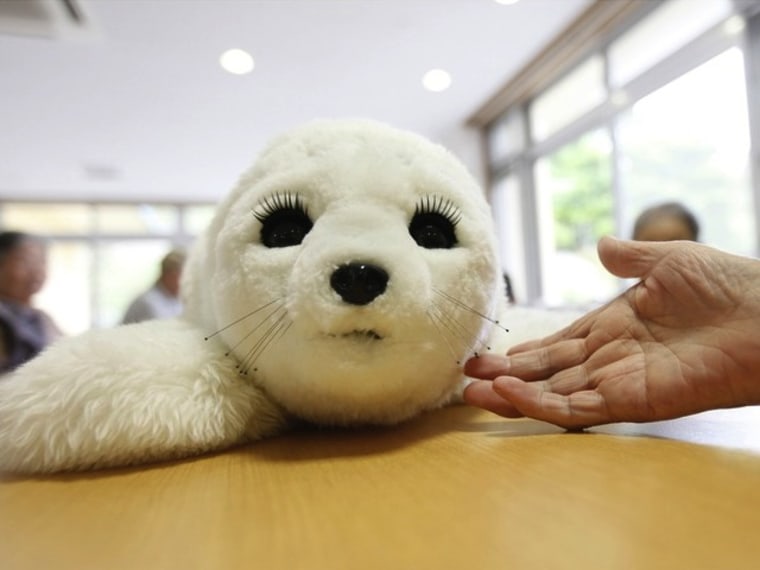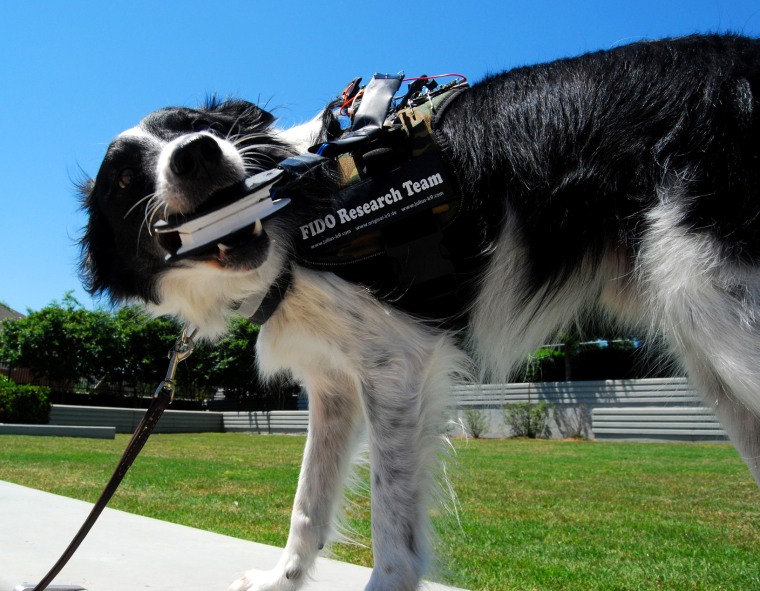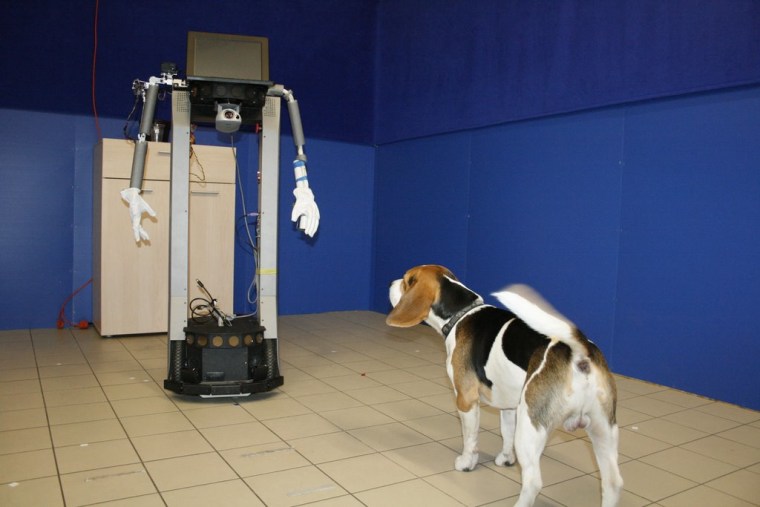Humans have been best buds with dogs for over 33,000 years, but that epic allegiance seems to be faltering as our pooches get closer and comfier with robots.
The Internet has long been documenting our cats' sinister fascination with Roombas. Now, new research suggests that dogs, loyal for millennia, are comfortable getting friendly with boxy machines.
Granted, at least some of that depends on the how the robot behaves, suggests a group of researchers at the Hungarian Academy of Science and Eötvös Loránd University, who published a new study recording the interactions between beast and bot in a new paper in Animal Cognition.
A PeopleBot robot, basically a screen hoisted on platform on wheels, was outfitted with two pointing arms. When a dog entered the room, the robot would point to one of two buckets placed in front of it to indicate that food was hidden there.
The authors report that the dogs had a hard time keeping up with the game (not a surprise since dogs don't really understand the concept of pointing). However, the dogs were more likely to find the food if the robot was friendly, or "social" to them before, by calling out the pooch by name, for instance. The dogs also spent more time around the robot if it had befriended them in an earlier session.

If it sounds like dogs are cheating on their tryst with humans, wait for the other half of the story: In some situations, humans have indicated a preference for robotic pets over live ones.
Nursing home residents in New Zealand were more social with and around a big-eyed robotic harp seal called Paro, one randomized control study published this year showed.
"People spoke to the robot more than the dog and touched the robot more than the dog," Elizabeth Broadbent, a senior lecturer in psychological medicine at the University of Auckland in New Zealand, told NBC News earlier this year.

Doggie-tronics
That dogs show any affinity with robots shouldn't be a surprise given the other dog-tech research currently being conducted.
A handful of teams around the world are building waterproof collars and sensors for pets that are modeled on human wearable computers, but are activated by tugs or bites or even taps of the nose.
The tools stand to have real life-saving value — for instance, if a service dogs identifies that its master is having a seizure, it can trigger an alarm on its collar. But these electronics could also serve as gentle reminder that it's time for dinner or a walk. Those researchers told NBC News earlier this year that the dogs were quick to learn and enjoyed the ability to communicate with their human masters.
Maybe the key to keeping our best friends is building the dog translator collar from "Up" ... before the robots do.
Nidhi Subbaraman writes about science and technology. You can follow her on Facebook, Twitter and Google+.
